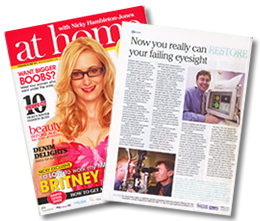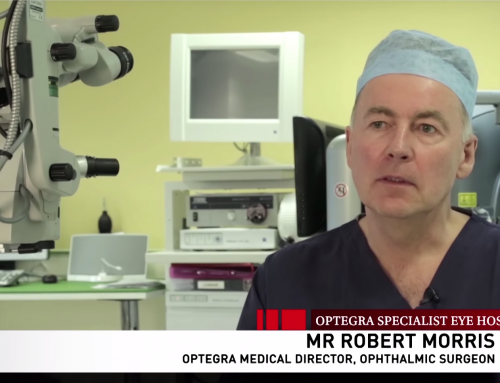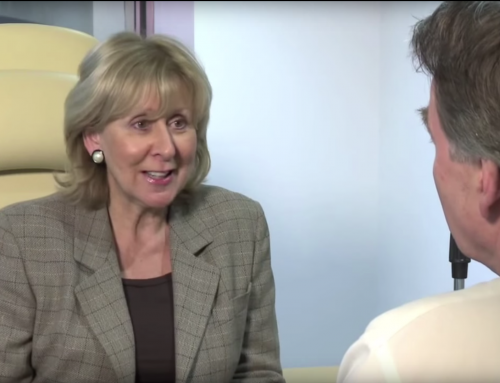Now you can really restore your failing eyesight
FADING vision, headaches, eyestrain or fatigue while trying to read or carry out intricate work are often symptoms that lead people rushing to the opticians.
Deteriorating eyesight can be gradual, and most put it down to old age, believing there is no solution. They get themselves glasses or contact lenses and believe that have no choice but to live with it.
But for those who are still active, sporty and frustrated with their assortment of spectacles, or those who rely on clarity and sharp vision for their work, the revolutionary ReSTOR lens is a viable solution.
The ground-breaking implantable lens, pioneered and manufactured by eye-care company Alcon, is being used by leading consultant opthalmologists across the UK to treat age-related loss of vision, known as presbyopia.
Highly respected Hampshire consultant ophthalmologist Rob Morris, who heads up Grange Eye Consultants, has had amazing feedback from patients.
So much so that he has hailed the ReSTOR lens an exciting medical breakthrough which offers millions of people suffering from presbyopia a genuine alternative to spectacles.
Presbyopia, which cannot be treated by traditional laser-eye-surgery techniques, is caused by an age-related loss in the elasticity of the eye’s natural crystalline lens. A young crystalline lens has elastic properties making it very malleable and easily moulded to enable clear near vision. As we get older, the consistency of the lens changes. It becomes harder and thicker making it increasingly difficult to adjust the shape of the lens, which affects its focusing ability and results in problems with near vision.
The corrective procedure is known as refractive lens exchange which, using the ReSTOR lens, has restored sight to millions. The best candidates for this procedure are those who need bifocal or varifocal glasses for close work.
The treatment is normally carried out under local anaesthetic and takes between 20 and 30 minutes for each eye. Surgery on the second eye is normally carried out a week or two weeks after the first.
During the operation, a micro-incision is made at the edge of the cornea. A tiny probe is inserted into the eye and the existing lens is gently broken down by ultrasound and removed.
The ReSTOR lens is then folded and inserted through the tiny incision. Once in place, the lens unfolds into the correct position. As the incision is so small, stitches are rarely needed. Patients can return home the same day and look forward to a rapid and pain-free recovery. It is an extremely safe procedure with minimal risk of complications.
Mr Morris, who launched Grange Eye Consultants to manage the increasing demand for more complex refractive surgery, said the lens exchange surgery is a lifestyle choice rather than a medical necessity.
He said: “ No one needs the surgery. There are people who are happy to wear glasses to correct their near sight but there are those who are frustrated and want to be spectacle free. So it is a lifestyle surgery.”
“If you look at people in the 1960s, when they were 60, they were perfectly happy to wear glasses. They were older, they were in their slippers and happy to put their feet up in retirement.”
“Sixty-year-olds now are very active. They go sailing, play tennis, go to the gym, they have botox and face lifts and their attitude is very different. They don’t accept that being in your 50s and 60s means you’re old. These are the people who want their lives to be spectacle-free.”
Nicky Hamilton Jones At Home Magazine – November 2007





